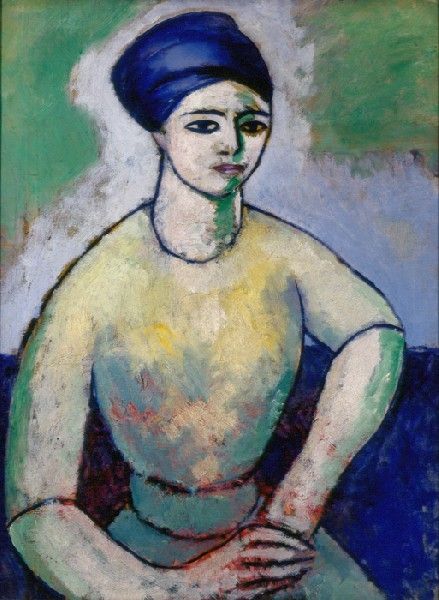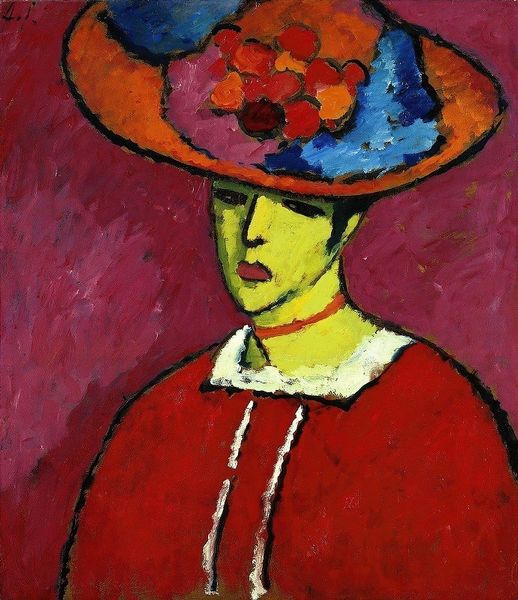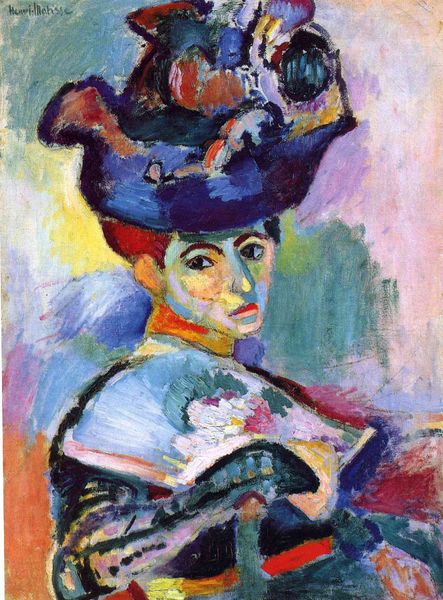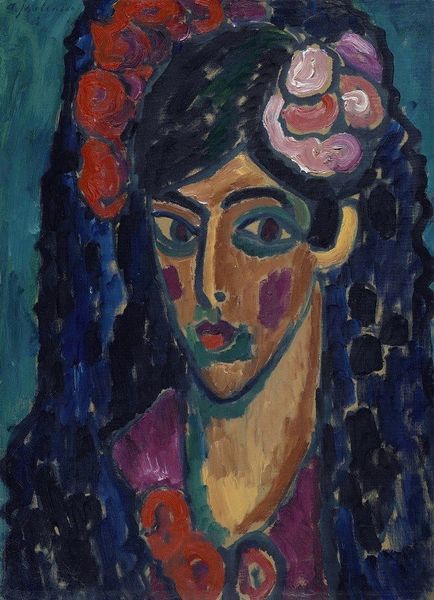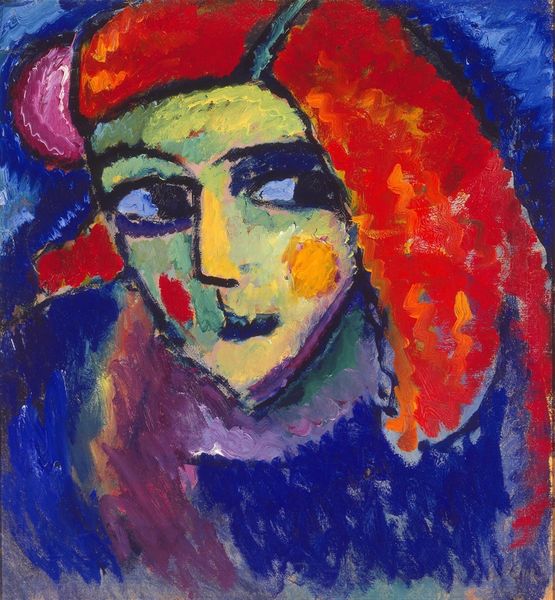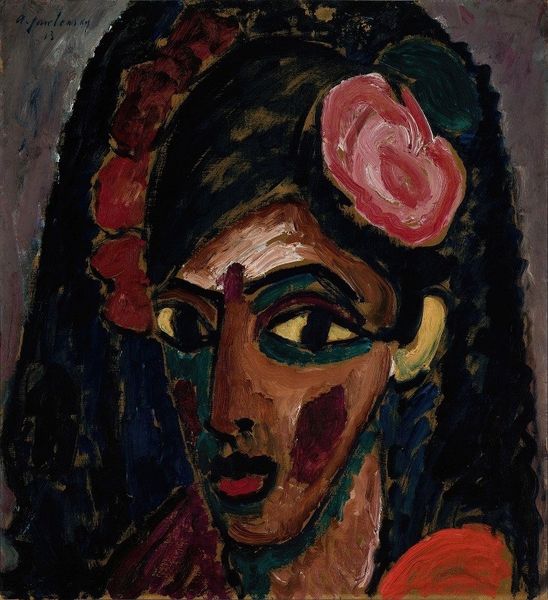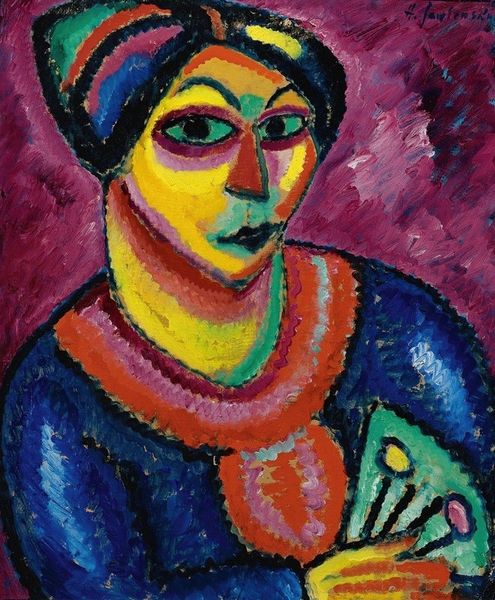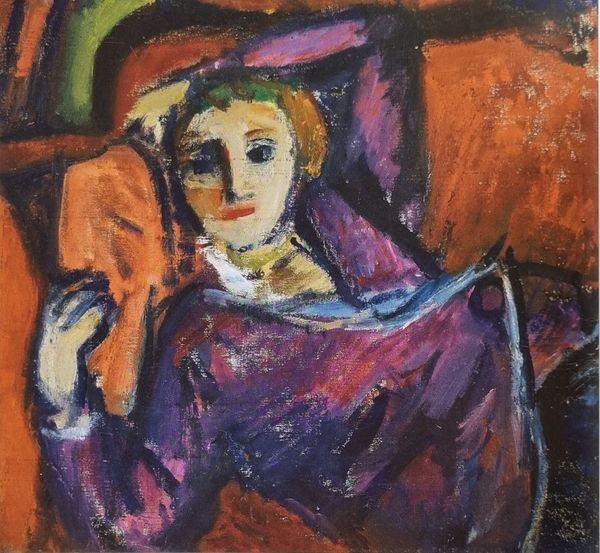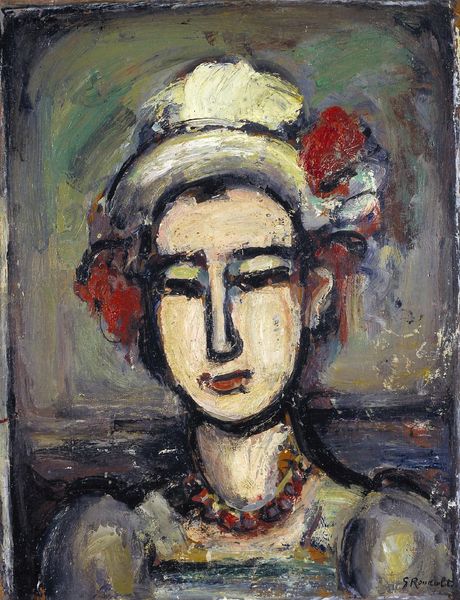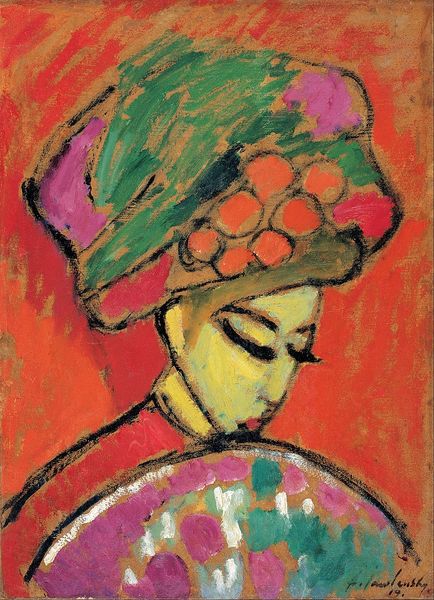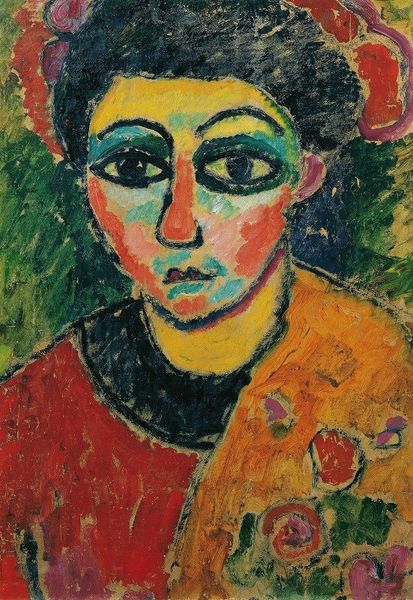
painting, oil-paint
#
portrait
#
painting
#
oil-paint
#
figuration
#
oil painting
#
expressionism
#
portrait art
Copyright: Public domain
Curator: Alexej von Jawlensky painted “Schokko with Red Hat” in 1909. The portrait depicts a woman, Schokko, who frequently modeled for Jawlensky. The artwork uses bold, expressive colors typical of the Expressionist movement. What is your first reaction? Editor: Immediately, it’s the physicality of the paint that strikes me. Thick strokes of oil build up the form. The handling of material screams of intention and process. Curator: Yes, the thick impasto enhances the emotional intensity. Consider how the stark juxtaposition of the vibrant red hat against Schokko's green skin disrupts conventional beauty standards. It seems Jawlensky is making a deliberate statement about the subjective nature of beauty, perhaps critiquing the expectations placed on women's appearance. Editor: I agree. The production of the image seems deliberately disruptive, and speaks to this. I’m interested in the craftsmanship itself – the labor involved in building up those layers of oil paint. It begs the question, what specific societal conditions afforded the artist the means to dedicate such intensive labor to this piece? Curator: A worthwhile question. You’re drawn to the concrete and tactile, as always. In the historical context, remember Expressionism emerged at a time of rapid social and political change. The artists were looking inward, attempting to convey intense feelings and existential anxieties of the early 20th century. Editor: Right, but the anxiety feels translated through the material choices. What specific dyes are creating the red and greens? Was that red readily available or costly? Did that have anything to do with the hat as a symbol, given the materials and cost? This shifts the social from the theoretical, to a historical account that intersects directly with artistic material. Curator: An interesting proposition – embedding a social read with the cost of the work itself, which again invites reflection on female identity at the time and female models as figures that exist across class lines. Schokko, through Jawlensky’s specific artistic expression and use of colors, exists as a symbol that resonates on many levels. Editor: Precisely, and thinking through process really illuminates all of those questions and intersections for me. Curator: For me too. Examining the artwork through an intersectional lens has helped reveal a deeper exploration of subjectivity, societal expectation, and even identity through the lens of its maker, and model.
Comments
No comments
Be the first to comment and join the conversation on the ultimate creative platform.
